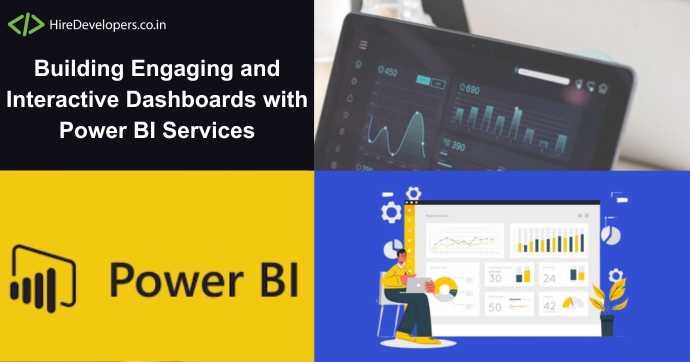December 1, 2024
Power BI’s Journey: The Future of Data Visualization and Data Analytics

Visuals like graphs and charts simplify complex information, making it easier for your audience to engage with the content and make informed decisions more quickly and confidently. Crafting a compelling data story that inspires action can be a powerful tool. When done effectively, data storytelling can positively influence both individuals and organizations. Power BI has come a long way since its inception, evolving from a simple tool for data visualization into a comprehensive platform for data analytics. Over the years, it has transformed the way businesses interact with their data, making it more accessible and actionable.
The Growth of Power BI
When Power BI was first introduced, it was primarily seen as a tool for creating basic charts and graphs. However, as businesses began to recognize the value of data-driven insights, the demand for more robust and flexible tools grew. Power BI responded by expanding its features and capabilities, integrating advanced analytics, and offering more customizable options. This growth has positioned Power BI as a leader in the field of data visualization and analytics, capable of handling everything from simple reports to complex data models.
- Business Intelligence and Data: The future of BI is deeply connected to the growing amount of data businesses generate and utilize.
- Importance of Speed and Accessibility: Fast and reliable data access is crucial as the volume of data continues to expand.
- Power BI Consulting: Power BI consulting helps businesses extract meaningful insights quickly and efficiently.
- Microsoft’s Power BI: A suite of BI and analytics tools by Microsoft, designed to turn large datasets into valuable business insights.
- Innovative Solutions: Power BI is a key tool for organizations seeking to innovate and stay competitive in a dynamic market.
Read More-: hire developer india
The Role of Power BI in Modern Businesses
In a Growing business landscape, swiftly analyzing and visualizing data is essential. Power BI’s intuitive interface empowers even non-technical users to generate meaningful reports, while its robust backend caters to advanced analytics for seasoned professionals. Its versatility allows businesses to customize their data analysis according to their unique requirements, making it an indispensable tool across various industries.
Data Integration and User-Friendly Interface
Power BI as a powerful tool in the world of data visualization and analytics, thanks to its ability to integrate seamlessly with various data sources. This allows businesses to easily connect and unify their data, regardless of where it resides. The platform’s user-friendly interface makes it accessible to users of all skill levels, enabling them to navigate through vast amounts of information with ease. By bringing together data from different sources into one unified view, Power BI helps organizations gain a comprehensive understanding of their operations and make informed decisions.
Visualizations and Real-Time Analysis
One of Power BI’s standout features is its capability to create intuitive visualizations. These visualizations transform complex data into easy-to-understand charts and graphs, making it simpler for users to spot trends, patterns, and outliers. Furthermore, Power BI provides real-time analysis, allowing organizations to monitor their data as it updates in real-time. This feature is particularly valuable in today’s fast-paced business environment, where timely insights can lead to swift and effective decision-making.
Advanced Analytics and Collaboration Features
Power BI is not just about visualizing data; it also offers advanced analytics that empower organizations to delve deeper into their data. With features such as machine learning integration and predictive analytics, Power BI enables businesses to forecast future trends and outcomes. Additionally, the platform’s collaboration tools allow teams to work together more effectively. By sharing reports and dashboards, team members can collaborate on data-driven strategies, ensuring everyone is aligned and informed.
Cloud-Powered Scalability and Continuous Innovation
The power of the cloud to offer scalability that meets the needs of organizations of all sizes. Whether you’re a small business or a large enterprise, Power BI can scale to handle your data requirements. The cloud-based nature of Power BI also ensures that users always have access to the latest features and updates, thanks to continuous innovation from Microsoft. This commitment to ongoing development means that Power BI is constantly evolving to meet the changing needs of the business world.
Upcoming Future of Data Analytics with Power BI
As the demand for data-driven insights continues to rise, Power BI is positioned to play a crucial role in the future of data analytics. By embracing Power BI, organizations can unlock the full potential of their data, driving better decision-making and improving overall business performance. With its combination of ease of use, powerful features, and constant innovation, Power BI is not just a tool for today but a key player in shaping the future of how businesses approach data analytics.
Power BI offers organizations the tools they need to do just that. By adopting Power BI, businesses can ensure they are equipped to handle the challenges of tomorrow’s data-driven world. Whether you’re looking to enhance your data visualization capabilities, improve collaboration, or scale your analytics efforts, Power BI provides the solutions you need to succeed.
As we look to the future, Power BI is poised to continue its evolution. The rise of artificial intelligence and machine learning is likely to further enhance its capabilities, allowing for even more advanced analytics and predictive modeling. Additionally, the increasing importance of real-time data will drive the development of new features that enable businesses to make decisions faster and with greater confidence. Power BI’s commitment to innovation ensures that it will remain at the forefront of data visualization and analytics, helping organizations navigate the complexities of the modern data landscape.
Conclusion
The evolution of Power BI is a testament to the growing importance of data in today’s world. As businesses continue to rely on data to inform their decisions, tools like Power BI will play an increasingly vital role. With its robust features, ease of use, and commitment to innovation, Power BI is well-positioned to shape the future of data visualization and analytics.





